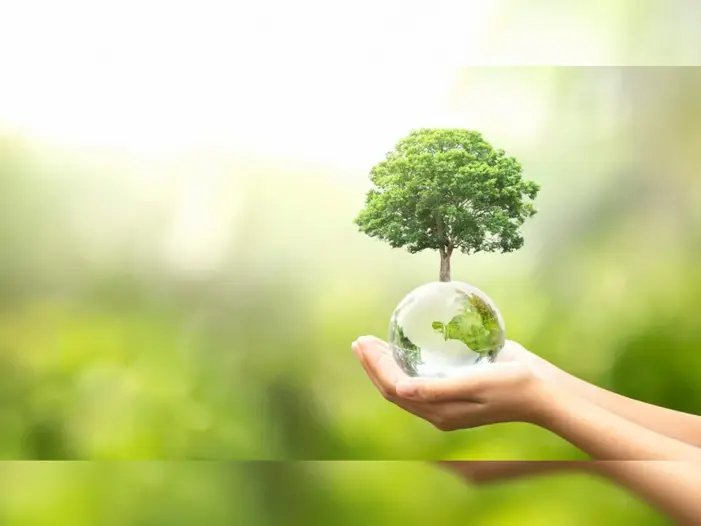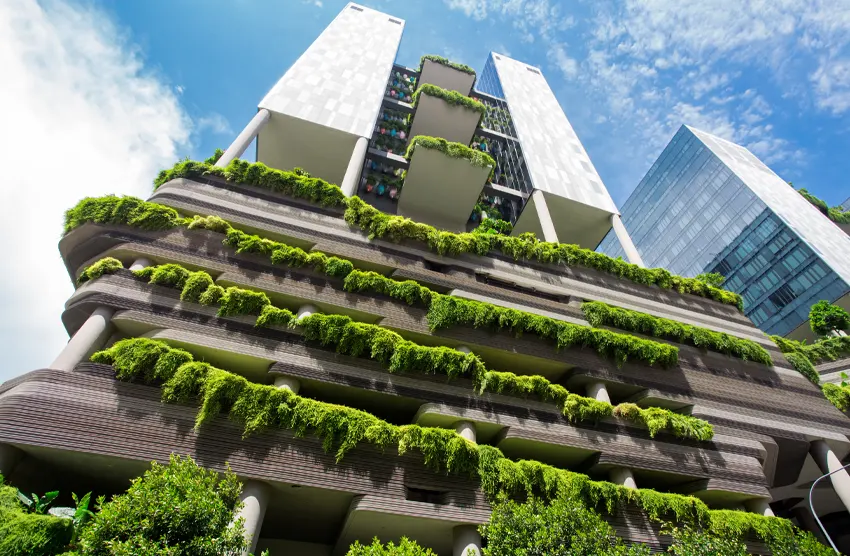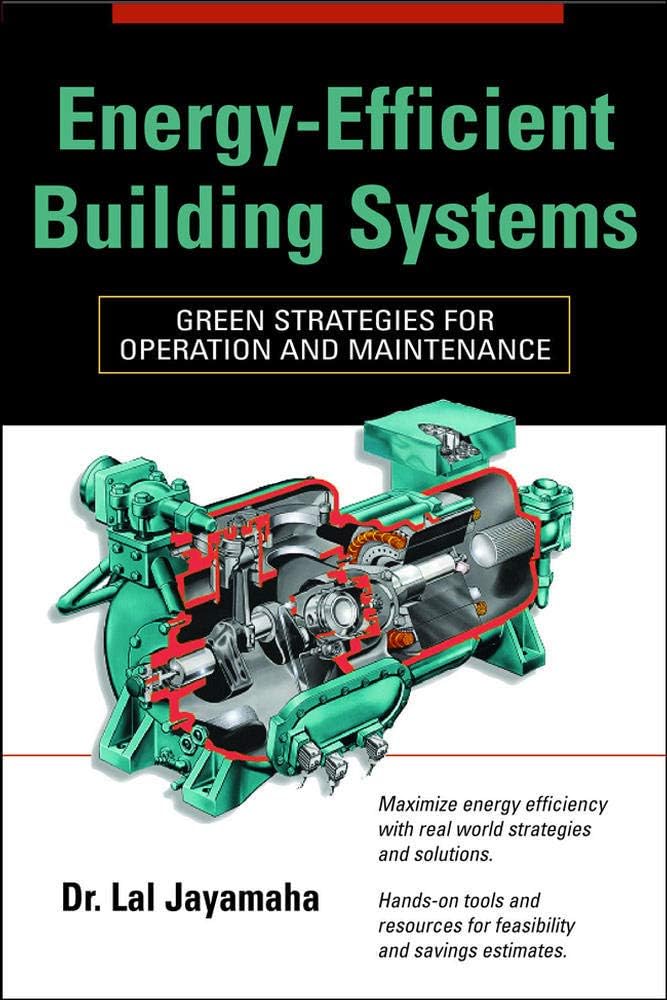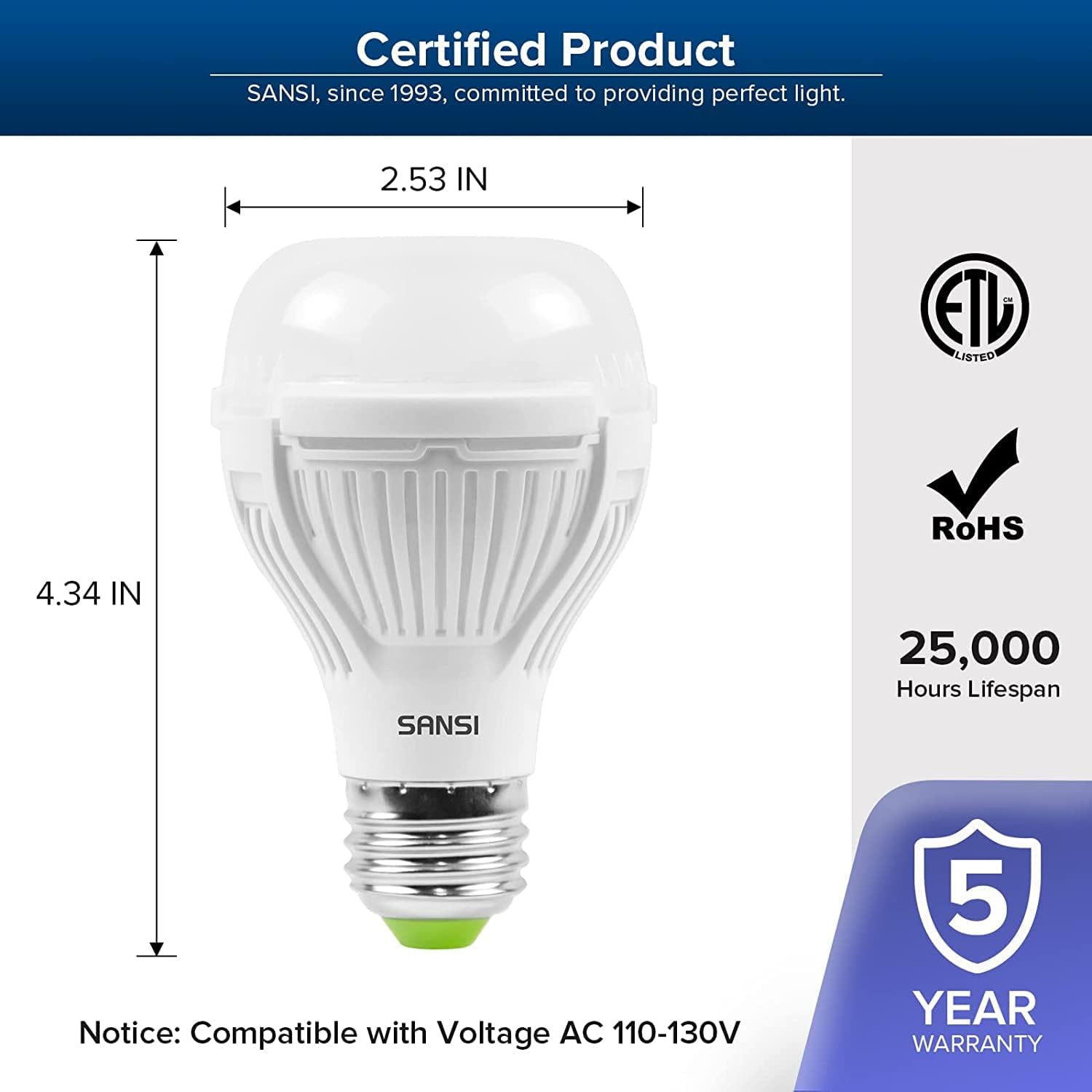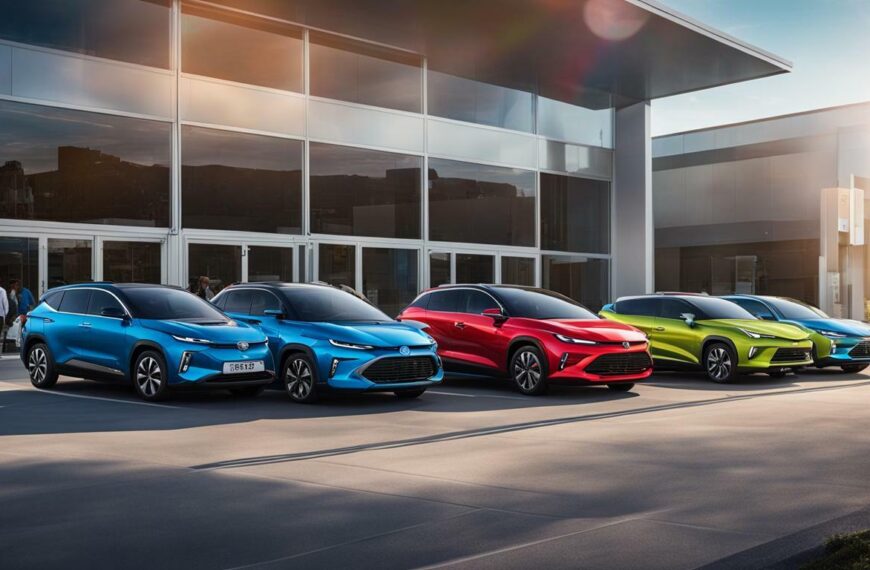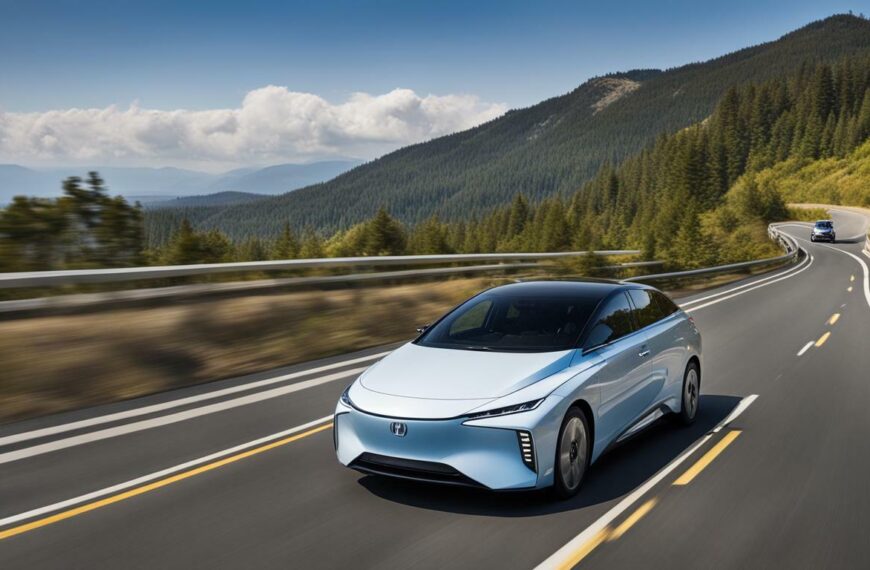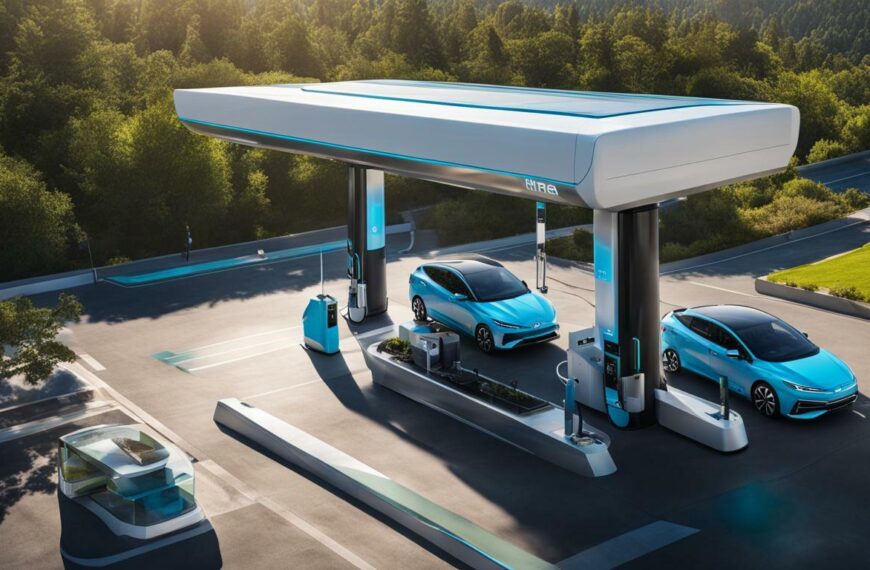Are you grappling with how to integrate green technology into your office or home for a more sustainable lifestyle? You’re not alone, as this is a common challenge faced by many today.
In fact, statistics show that buildings contribute to 40% of the world’s total energy-related CO2 emissions. This blog will guide you through how incorporating green building technologies in office spaces and homes can lead towards lessening environmental impact and developing a sustainable future.
Stay tuned because we are just getting started on this exciting journey towards sustainability!
Key Takeaways
- Green buildings are designed and constructed using environmentally sustainable materials and practices to minimize their impact on the environment.
- They focus on energy efficiency, use of renewable resources, and reducing waste and pollution throughout their lifecycle.
- Green buildings utilize technologies such as solar power, biodegradable materials, green insulation, smart appliances, cool roofs, water efficiency technologies, and sustainable indoor environment technologies.
- By incorporating these technologies into office spaces and quality homes, we can reduce energy consumption, conserve water resources, improve indoor air quality, and contribute to a more sustainable future.
What is a Green Building?

A green building is a structure that is designed and constructed using environmentally sustainable materials and practices to minimize its impact on the environment. It focuses on energy efficiency, use of renewable resources, and reducing waste and pollution throughout its lifecycle.
Definition and importance of sustainable urban planning
Sustainable urban planning sits at the heart of green buildings. It involves designing cities and towns in ways that improve quality of life while minimizing environmental impact. Planning sustainable neighborhoods boosts resilience against climate change by reducing greenhouse gas emissions and promoting resource efficiency.
For instance, eco-friendly infrastructure in areas such as transport, energy, waste management, and water supplies truly drives forward sustainability efforts. Moreover, it promotes social cohesion through shared community spaces while ensuring everyone has access to essential services like healthcare and education.
A city planned with sustainability in mind sets the groundwork for a healthier environment for both its citizens and nature itself. Green building is an embodiment of this ethos; it marries construction with ecology, creating structures that respect their surroundings while serving human needs efficiently and responsibly.
Characteristics of Green Buildings

Green buildings are designed to be energy efficient, use sustainable materials, and promote water efficiency. Discover the key features that make these buildings environmentally friendly and sustainable.
Read more to learn about the benefits of green building technologies for a sustainable lifestyle.
Energy efficiency
Energy efficiency stands at the core of green buildings. Harnessing renewable energy systems, these structures use solar power, wind energy, and even water to generate power. I’ve seen firsthand how they minimize reliance on non-renewable sources that harm our planet.
For instance, smart appliances incorporated into this sustainable architecture adjust consumption patterns for optimal use. Alongside this, low-emission windows reduce heat absorption while insulating materials keep indoor temperatures comfortable, cutting down the need for heating or air conditioning.
The ultimate goal here is zero-energy buildings offering maximum comfort with minimum environmental impact – a reality made possible by modern technology in energy-efficient design and construction.
Use of sustainable materials
Sustainable materials play a critical role in green buildings. They involve natural, non-toxic, recycled, or biodegradable elements which are essential for both the creation and maintenance of eco-friendly structures.
These materials can range from renewable plant-based products to reused metals and plastics, reducing reliance on non-renewable resources significantly. As an added advantage, these building components also tend to have a low-carbon footprint and contribute positively towards a smaller environmental impact overall.
Practices such as sourcing local materials help decrease transport-associated emissions while promoting local economies. The integration of sustainable material into construction is therefore not just beneficial for the environment but socially advantageous too!
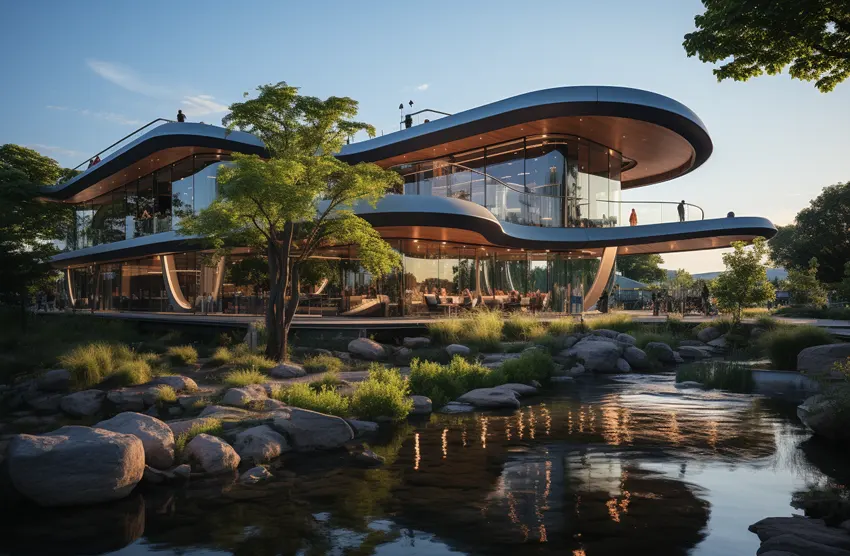
Water efficiency
Water efficiency is a crucial aspect of green buildings. Green construction focuses on reducing water consumption and implementing sustainable water management practices. By utilizing technologies such as low-flow fixtures, rainwater harvesting systems, and efficient irrigation methods, green buildings can significantly reduce their water usage.
This not only conserves this precious resource but also helps to minimize the strain on local water supplies and ecosystems. Additionally, incorporating greywater recycling systems in green buildings allows for the reuse of wastewater for non-potable purposes like toilet flushing or landscape irrigation.
These innovative approaches help promote a more sustainable use of water resources and contribute to a greener future.
Sustainable Construction Technologies for Green Buildings
Sustainable Construction Technologies for Green Buildings focus on utilizing solar power, biodegradable materials, green insulation, smart appliances, cool roofs, water efficiency technologies, sustainable indoor environment technologies like electrochromic smart glass and low-emitting materials.
Solar power
Solar power plays a crucial role in sustainable construction, providing an abundant source of renewable energy. By harnessing the power of the sun through photovoltaic panels, green buildings can generate clean electricity to meet their energy needs.
Not only does this reduce reliance on non-renewable energy sources, but it also helps to minimize greenhouse gas emissions and combat climate change. Furthermore, solar power can help lower utility bills for homeowners and businesses alike, making it a cost-effective and environmentally friendly choice for powering our buildings.
Biodegradable materials
Biodegradable materials play a crucial role in sustainable construction. They are designed to break down naturally over time, reducing waste and minimizing environmental impact. By using biodegradable materials in building projects, we can reduce our reliance on non-renewable resources and decrease the amount of harmful chemicals released into the environment during manufacturing and disposal processes.
These materials include natural fibers such as bamboo, cork, and hemp, as well as bio-based plastics made from renewable sources like cornstarch or sugarcane. Incorporating biodegradable materials into green buildings not only helps to create healthier living spaces but also contributes to a more sustainable future for all.
Green insulation
Green insulation is a crucial component of sustainable building practices. It offers numerous benefits, such as reducing energy consumption and lowering carbon emissions. By using eco-friendly materials like recycled denim or cellulose, green insulation helps to create an efficient thermal barrier that keeps buildings warm in winter and cool in summer.
It also improves indoor air quality by minimizing the presence of harmful chemicals commonly found in traditional insulation materials. Green insulation plays a significant role in creating environmentally friendly homes and offices that are comfortable, energy-efficient, and contribute towards a more sustainable future.
Smart appliances
Smart appliances play a crucial role in green building construction. These innovative devices are designed to be energy-efficient, reducing the overall energy consumption of homes and office spaces.
Smart refrigerators, for example, use sensors and advanced technology to optimize cooling settings and reduce wastage. Similarly, smart thermostats can automatically adjust temperature settings based on occupancy patterns, resulting in lower energy usage.
By integrating these intelligent appliances into green buildings, we can further enhance their sustainability and contribute to a greener future.
Furthermore, smart appliances not only save energy but also offer convenience and control to homeowners and businesses. With the ability to connect to smartphones or tablets via Wi-Fi or Bluetooth, users can remotely monitor and control their appliances from anywhere.
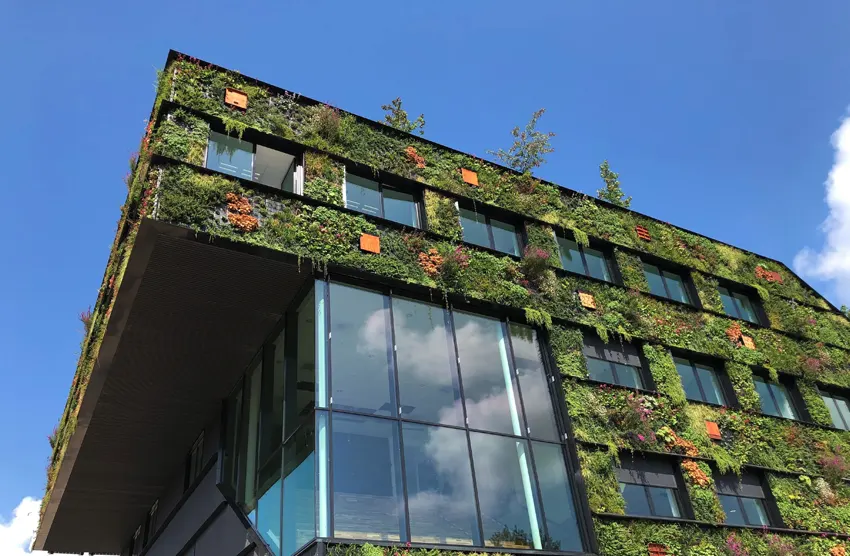
Cool roofs
Cool roofs are a technology used in green construction. They help reduce energy consumption by reflecting sunlight and heat away from the building. By using materials that have high solar reflectance, cool roofs can keep buildings cooler, reducing the need for air conditioning and lowering energy costs.
This not only saves money but also reduces carbon emissions and helps combat climate change. Cool roofs are an effective way to improve energy efficiency in buildings while providing a comfortable indoor environment.
Water efficiency technologies
Water efficiency technologies are an essential component of green buildings. These technologies focus on reducing water consumption by implementing innovative systems and practices.
For example, low-flow fixtures such as toilets, faucets, and showerheads can significantly reduce water usage without compromising performance. Rainwater harvesting systems are another example that collects rainwater for non-potable uses like landscaping or flushing toilets.
Additionally, graywater recycling systems treat wastewater from sinks, showers, and laundry to reuse it for irrigation or toilet flushing purposes. Implementing these water efficiency technologies not only conserves this precious resource but also reduces the strain on local water supplies and lowers utility costs for building owners and residents.
Sustainable indoor environment technologies
Sustainable indoor environment technologies play a crucial role in green building design. These innovative technologies focus on creating healthier and more comfortable living spaces while minimizing energy consumption.
One example is electrochromic smart glass, which can adjust its tint to control the amount of sunlight and heat entering a room, reducing the need for air conditioning. Another technology is the use of low-emitting materials, which release fewer chemicals into the indoor air, promoting better indoor air quality.
By incorporating these sustainable indoor environment technologies, green buildings can enhance occupant well-being and reduce their environmental impact.
Electrochromic smart glass
Electrochromic smart glass is an innovative technology used in green buildings to optimize energy efficiency and provide a more comfortable indoor environment. This type of glass has the ability to change its transparency or tint in response to external stimuli, such as light or heat.
By adjusting the tint levels, electrochromic smart glass can effectively control the amount of sunlight entering a building, thus reducing the need for artificial lighting and air conditioning.
This not only helps in conserving energy but also enhances occupant comfort by minimizing glare and excess heat. Additionally, electrochromic smart glass can be integrated with automated systems to automatically adjust its tint based on pre-set preferences or real-time conditions.
Low-emitting materials
Low-emitting materials play a crucial role in green building construction. These materials release minimal levels of harmful chemicals and pollutants into the air, creating healthier indoor environments for occupants.
By using low-emitting materials such as paints, adhesives, carpets, and furniture, we can reduce the presence of volatile organic compounds (VOCs) that contribute to poor indoor air quality.
This not only promotes better health but also supports sustainable living practices by minimizing our impact on the environment. Choosing low-emitting materials is an essential aspect of creating eco-friendly buildings that prioritize the well-being of both people and the planet.
Benefits of Green Building Technologies
Green building technologies offer numerous benefits including improved business positioning, long-term sustainable results, outshining competitors, and minimizing harmful environmental impacts.
Improves business positioning
Green building technologies not only benefit the environment but also provide businesses with a competitive advantage. By adopting sustainable construction practices and incorporating eco-friendly materials, companies can showcase their commitment to sustainability and attract environmentally conscious customers.
Green buildings demonstrate a forward-thinking approach that aligns with societal values, positioning businesses as leaders in environmental responsibility. Furthermore, investing in green building technologies can lead to long-term cost savings through reduced energy consumption and operational expenses.
The adoption of sustainable practices not only improves business positioning but also contributes to a healthier and more sustainable future for all.
Delivers long-term sustainable results
Green building technologies not only contribute to a healthier and more sustainable environment, but they also deliver long-term sustainable results. By incorporating energy-efficient appliances, sustainable materials, and renewable energy systems, green buildings are able to significantly reduce their carbon footprint.
This not only benefits the planet by conserving valuable resources but also helps businesses and homeowners save on long-term operating costs. Moreover, green buildings promote a healthier indoor environment by using low-emitting materials and implementing sustainable indoor environment technologies.
With their commitment to sustainability, green buildings ensure that we can enjoy a better quality of life while preserving our planet for future generations.
Implementing green design and construction technologies has numerous advantages in terms of environmental sustainability as well as economic viability. Green building techniques focus on reducing resource consumption throughout the building’s lifecycle, leading to reduced energy usage, water conservation, and waste reduction.
Outshines competitors
Green buildings equipped with sustainable construction technologies have a distinct edge over their competitors. By incorporating features like energy-efficient appliances, biodegradable materials, and green insulation, these buildings offer superior environmental performance and reduced operational costs.
Not only do they showcase a commitment to sustainability, but they also attract environmentally-conscious customers who value eco-friendly practices. In addition, green buildings contribute to a healthier indoor environment, leading to increased employee productivity and satisfaction.
Ultimately, by outshining their competitors in terms of sustainability and resource efficiency, green buildings set the benchmark for the future of construction.
Minimizes harmful environmental impacts
Green buildings are designed to minimize harmful environmental impacts. They achieve this by incorporating sustainable construction technologies and practices throughout the building lifecycle.
These buildings use energy-efficient appliances and renewable energy systems, reducing our reliance on non-renewable resources. The materials used in green building construction are eco-friendly and biodegradable, contributing to a lower carbon footprint.
Additionally, green buildings implement water efficiency technologies to conserve water resources. By minimizing harmful environmental impacts, green buildings play a crucial role in promoting sustainability and creating healthier environments for both people and the planet.
Case Studies of Sustainable Buildings
There are numerous examples of sustainable buildings that showcase the possibilities and benefits of green technology integration. From the Bullitt Center in Seattle, which produces more energy than it consumes, to the Pixel Building in Melbourne, which uses rainwater harvesting and solar power, these groundbreaking structures serve as inspiration for future environmentally conscious projects.
Ten sustainable buildings that amaze the world
- The Edge, Amsterdam – Known as the world’s most sustainable building, it uses advanced technologies to optimize energy efficiency.
- One Angel Square, Manchester – This iconic building harnesses renewable energy and has achieved a BREEAM Outstanding rating.
- Bullitt Center, Seattle – The first commercial office building to achieve Living Building certification, it generates more energy than it consumes.
- Pixel, Melbourne – This unique building features a green façade and uses solar panels and rainwater harvesting to minimize its environmental impact.
- Bahrain World Trade Center, Manama – It showcases innovative wind turbines integrated into the structure that generate clean energy for the building.
- Bosco Verticale, Milan – These vertical forests are not only visually stunning but also help improve air quality in the surrounding area.
- The Crystal, London – A sustainable events venue and exhibition space that utilizes solar power and rainwater harvesting systems.
- Icon EarthCote Building, South Africa – This eco-friendly building showcases natural materials like rammed earth walls and recycled wood.
- Khoo Teck Puat Hospital, Singapore – With green roofs and energy-saving features, this hospital aims to reduce its carbon footprint significantly.
- Bulletproof House of Glass, New York City – This self-sufficient glass home uses geothermal heat pumps and solar power for all its energy needs.
Green Building in Office Spaces
Green building in office spaces offers numerous benefits for businesses, including improved employee productivity and reduced operating costs. Discover how sustainable construction techniques and eco-friendly technologies are transforming the way we work.
Read more to find out!
Benefits for businesses
Green buildings offer numerous benefits for businesses. Firstly, implementing sustainable construction technologies in office spaces can improve the positioning of a business within its industry.
Companies that prioritize environmental sustainability and green building practices are seen as leaders and innovators, gaining the respect and trust of clients, customers, and stakeholders.
Secondly, investing in green buildings delivers long-term sustainable results for businesses. Energy-efficient design features such as solar power systems and smart appliances help reduce utility costs over time.
Additionally, using sustainable materials and incorporating water efficiency technologies minimize operational expenses while contributing to a healthier environment.
Furthermore, embracing green building practices can give businesses a competitive edge. With growing awareness about climate change and increasing demand for eco-friendly products/services, companies that adopt green technology construction methods outshine their competitors by demonstrating their commitment to sustainability.
Implementation challenges
Implementing green building practices can come with its fair share of challenges. Here are some obstacles that may arise:
- Limited availability of eco – friendly building materials, which can restrict the options for sustainable construction.
- Higher initial costs of green building technologies and materials compared to conventional alternatives.
- Lack of awareness and understanding among architects, builders, and homeowners about sustainable construction practices.
- Resistance to change from traditional construction methods and reluctance to adopt new technologies.
- Need for specialized knowledge and skills among construction professionals to properly implement green building techniques.
- Stricter regulations and building codes that may not align with sustainable design principles or require additional approvals for certain green features.
- Limited access to renewable energy sources in certain locations, making it challenging to achieve zero-energy goals.
- Difficulty in sourcing local and environmentally friendly materials due to supply chain limitations.
Green Building in Quality Homes
Green building principles can also be applied to quality homes, providing homeowners with numerous benefits. From energy savings to improved indoor air quality, sustainable construction techniques offer a greener and healthier living environment.
Find out how green building technologies can transform your home into an eco-friendly haven.
Benefits for homeowners
Green buildings offer numerous benefits for homeowners. Firstly, these sustainable homes provide a healthier living environment by using eco-friendly construction materials that reduce harmful emissions.
This helps improve indoor air quality and reduces the risk of respiratory problems for occupants. Additionally, green buildings are designed to be energy-efficient, resulting in lower utility bills for homeowners.
The use of renewable energy systems such as solar power further contributes to cost savings over time. Moreover, these homes have a smaller carbon footprint, making them more environmentally friendly and helping homeowners contribute to a greener future.
Cost considerations
Investing in green buildings for quality homes may seem expensive at first glance, but the long-term benefits and cost savings make it an economical option for most homeowners. Here’s a breakdown of some of the cost considerations involved in green buildings.
| Aspect | Cost Consideration |
|---|---|
| Construction Materials | Sustainable building materials may cost more upfront but they usually last longer and require less maintenance, offsetting initial costs. |
| Energy Efficiency | Energy-efficient appliances and systems like solar panels may require more investment initially, but they significantly reduce energy costs, saving money over time. |
| Water Efficiency | Green buildings incorporate rainwater harvesting and greywater systems, which may cost more initially but can significantly lower water bills in the long term. |
| Insulation | Green insulation, such as recycled denim or sheep’s wool, might be more costly to install, but they can drastically lower heating and cooling bills, leading to considerable savings. |
| Maintenance | Green buildings are designed to be durable and easy to maintain, which can lead to lower maintenance costs over the building’s lifetime. |
While the upfront costs might be higher, the return on investment through savings on energy and water bills, along with lower maintenance costs, makes green buildings a cost-effective solution in the long run.
Green Building Initiatives and Programs
Discover the global impact and sustainability efforts driving the adoption of green building technologies, and learn about Deloitte’s role in advancing sustainable construction practices.
Read more on our blog!
Global impact and sustainability efforts
Green building initiatives and sustainability efforts have a significant global impact. By promoting sustainable construction practices, these initiatives aim to reduce the environmental impact of buildings and foster a more sustainable future.
Through the use of energy-efficient technologies, green materials, and renewable energy systems, green buildings help minimize carbon footprints and conserve resources. Furthermore, they contribute to a transition towards sustainable land use, energy consumption, transportation systems, and building design.
These efforts not only benefit the planet but also create healthier living environments for individuals while supporting our overall well-being.
Deloitte’s role in advancing sustainable construction
Deloitte plays a crucial role in driving sustainable construction forward. As a global leader in professional services, Deloitte utilizes its expertise to promote and implement environmentally friendly practices within the construction industry.
Through their sustainability initiatives, they help companies adopt green building technologies and strategies to reduce their carbon footprint. Deloitte also conducts research on sustainable architecture and construction techniques, providing valuable insights and guidance to clients.
By encouraging the use of renewable energy systems, resource-efficient materials, and energy-efficient design principles, Deloitte contributes significantly to the advancement of sustainable construction practices worldwide.
Conclusion
Green buildings are not just a trend, but a necessity in today’s world. The use of sustainable construction technologies and eco-friendly materials is crucial for creating energy-efficient and environmentally friendly buildings.
Whether it’s in office spaces or quality homes, green building technology can have numerous benefits for businesses and homeowners alike. By adopting these practices, we can contribute to a more sustainable future while enjoying the benefits of reduced energy consumption and minimized environmental impacts.
It’s time to embrace technology for a sustainable lifestyle and prioritize green buildings as the way forward.
FAQs
1. What is a green building?
A green building is a structure that is designed, built, and operated in an environmentally friendly manner, using resources efficiently and minimizing its impact on the environment.
2. How do green buildings contribute to sustainability?
Green buildings contribute to sustainability by reducing energy consumption, conserving water, improving indoor air quality, and incorporating renewable materials. They help minimize environmental impact and promote a healthier living or working environment.
3. Are green buildings more expensive to construct?
While the initial construction cost of a green building may be slightly higher than conventional buildings, they offer long-term savings through reduced operational costs such as lower energy bills and maintenance expenses.
4. How can I make my office or home more sustainable?
To make your office or home more sustainable, you can incorporate energy-efficient appliances and lighting systems, install low-flow fixtures for water conservation, use eco-friendly materials for construction or renovation projects, and implement recycling programs.
5. Can I retrofit an existing building to make it greener?
Yes, existing buildings can be retrofitted with various sustainable features such as solar panels for generating clean energy, insulation upgrades for improved efficiency, smart technologies for better control over energy usage, and water-saving fixtures to reduce consumption


